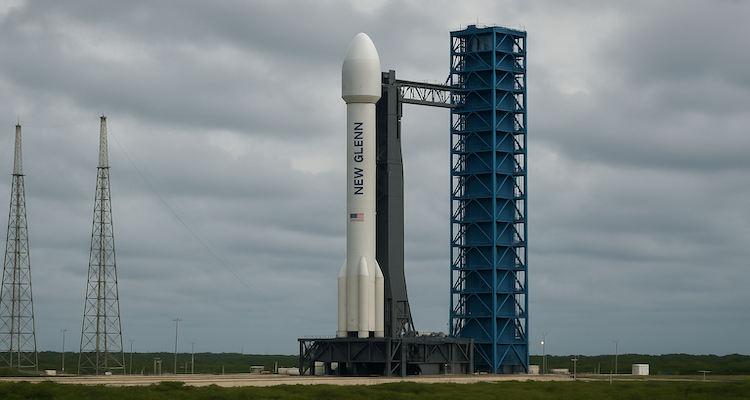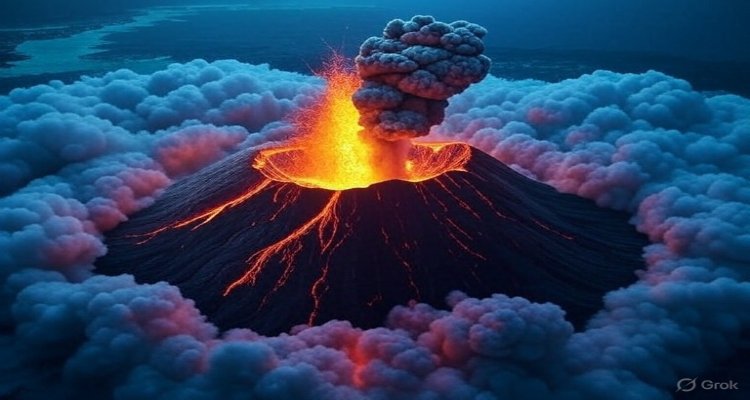The Untold Story of Deep-Sea Volcanoes and Climate Change
Hidden deep beneath the ocean, undersea volcanoes are shaping our climate in surprising ways. Here’s how they influence Earth’s future.
Introduction: The Hidden Fire Beneath the Waves
Far below the ocean’s surface, beyond the reach of sunlight and human eyes, lies one of Earth’s most mysterious forces—deep-sea volcanoes. These underwater giants erupt silently, reshaping the ocean floor while releasing heat, gases, and minerals that ripple through the global climate system. While most discussions of climate change focus on carbon emissions, melting ice caps, and fossil fuels, scientists are now uncovering the untold role of these submarine fire-breathers in regulating Earth’s climate.
Context & Background: Volcanoes Beyond the Horizon
When most people picture a volcano, they imagine Mount Etna in Sicily or Hawaii’s Kīlauea spitting lava into the air. Yet, over 75% of the planet’s volcanic activity happens underwater. Stretching across nearly 37,000 miles, the mid-ocean ridge system is Earth’s largest volcanic chain, producing new crust and discharging gases into the ocean.
For decades, deep-sea volcanoes were dismissed as geological curiosities with little connection to climate. But recent research shows they may act like “hidden regulators,” releasing heat and carbon dioxide at critical moments in Earth’s history—sometimes stabilizing the climate, other times pushing it toward change.
Main Developments: A Climate Connection Emerges
Geologists studying seafloor eruptions have found that volcanic activity can rise and fall in sync with glacial cycles. During ice ages, when sea levels dropped, pressure on the seafloor eased, allowing magma to flow more freely. As glaciers melted, sea levels rose again, suppressing volcanic output.
This natural “breathing” of Earth’s crust means deep-sea volcanoes may have played a part in past warming and cooling cycles. Today, with human-driven climate change accelerating, the question is whether these hidden eruptions could amplify or moderate the effects of global warming.
Another surprising discovery is the role of hydrothermal vents—volcanic chimneys spewing superheated, mineral-rich water. These vents not only support bizarre life forms but also exchange heat and chemicals with the ocean, influencing circulation patterns and the carbon cycle.
Expert Insight: Scientists Weigh In
Dr. Maya Kendall, a marine geologist at Woods Hole Oceanographic Institution, explains:
“We’re beginning to understand that the ocean floor is not a passive boundary. It’s dynamic, interacting with the ocean and atmosphere in ways we’re only starting to quantify.”
Meanwhile, climatologist Dr. Javier Romero notes that the scale of volcanic carbon release is small compared to human emissions but warns against underestimating it:
“Deep-sea volcanoes are not the cause of today’s climate crisis. However, their influence on long-term climate balance makes them crucial to understanding future tipping points.”
Impact & Implications: Why It Matters Now
The revelations about deep-sea volcanoes open new questions: Could their activity intensify in response to melting ice sheets today? Might warming oceans alter volcanic cycles in ways that add stress to the climate system?
For policymakers and climate modelers, these mysteries highlight the importance of including deep Earth processes in predictions. Ignoring them could mean overlooking a hidden lever in the climate machine.
On a broader scale, understanding submarine volcanism isn’t just about climate—it also informs disaster preparedness, marine biodiversity conservation, and even the search for life on other planets, where similar under-ice volcanic activity may exist.
Conclusion: A Hidden Force in the Climate Puzzle
The story of deep-sea volcanoes reminds us that climate change is not solely a human-versus-nature narrative. Beneath the waves, Earth’s own machinery is in constant motion, shaping the planet’s destiny in silence. While humans remain the primary driver of today’s warming, deep-sea volcanoes are a reminder that the climate system is vast, complex, and intertwined with forces we are only beginning to understand.
As research advances, the seafloor may reveal not just the planet’s fiery past but also crucial clues for safeguarding its future.
Disclaimer :This article is for informational purposes only. It draws on current scientific research but does not claim to offer definitive conclusions, as undersea volcanic studies are ongoing and evolving.











